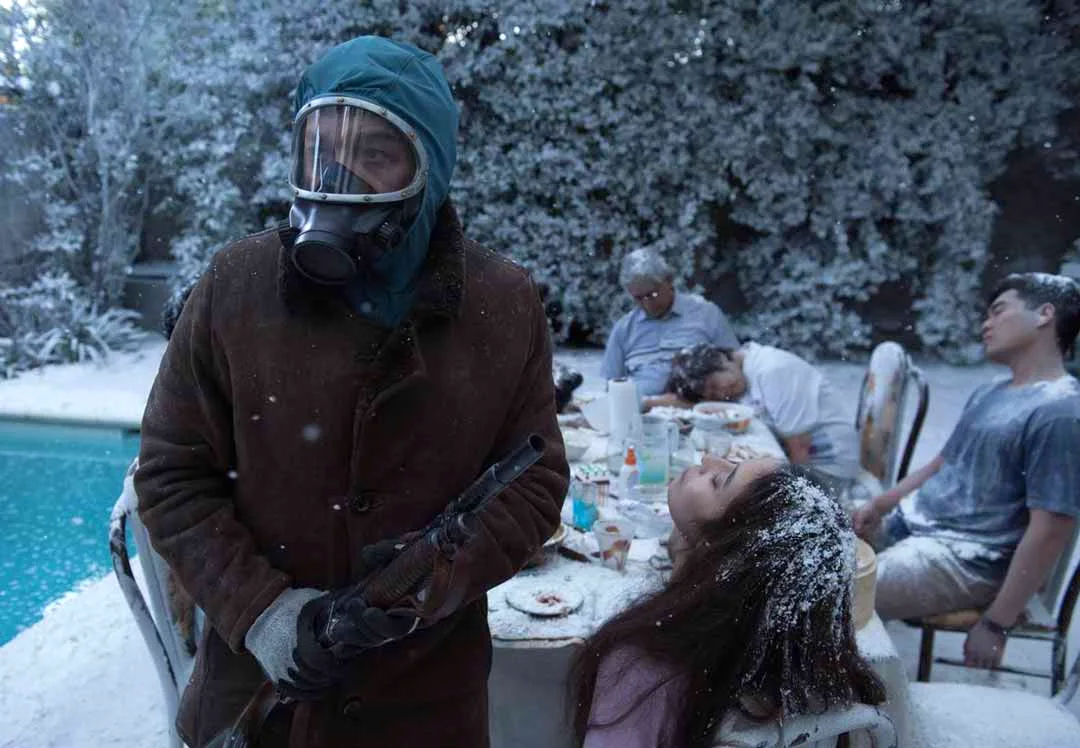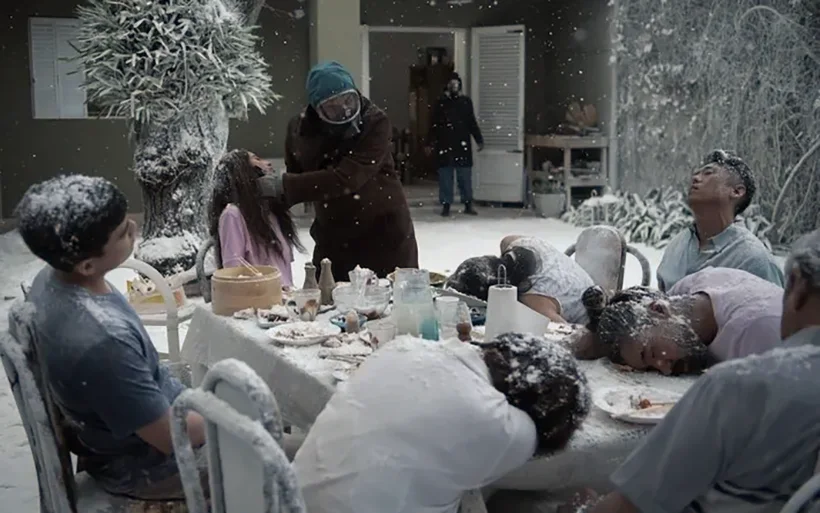Type and hit Enter to search
Experts in aesthetic surgery, dermatology, and beauty bring you the latest trends, research, and advice to help you make informed decisions about your appearance and health.
A web platform dedicated to aesthetic surgery, dermatology, and beauty, where expertise meets innovation, and your desires and needs become our mission. In a world where appearance and health go hand in hand, our platform leads the revolution, delivering the latest trends, research, and expert advice directly to you.
Our team consists of highly skilled professionals in the fields of aesthetic surgery and dermatology, committed to providing reliable information and guidance that will help you make informed choices about your appearance and well-being. We understand that every individual has unique needs and desires, which is why we approach each person with the utmost care and professionalism.
Powered by Aestetica Web Design © 2024
I Came for Sci-Fi. I Stayed for the Existential Collapse: The Eternaut Ending Explained
I didn’t watch The Eternaut—I survived it. If you’re here for The Eternaut Ending Explained, prepare for less hand-holding and more alien manipulation. That stadium scene wasn’t just a twist—it was a psychological ambush. By the time Clara pulled the trigger, I wasn’t sure if I was watching sci-fi or my own surveillance footage. There’s no clean break between what happened and what’s coming. If you think you understood that finale, congratulations—you’re probably already compromised.
Me vs. Juan Salvo: Who’s More Lost in This Time Loop? The Eternaut Ending Explained
Season 1 Recap – Buenos Aires Under the Snow (Episode Summaries)
A freak summer snowstorm turns Buenos Aires into a toxic trap, kicking off Netflix’s El Eternauta. Episodes 1–6 track Juan Salvo (Ricardo Darín) and his friends as they fight to survive. In Episode 1 “Noche de truco,” the lethal snow begins mid-card game; Juan’s group improvises hazmat suits so he can search for his daughter Clara. Episode 2 “Salgan al sol” has Juan treacherously crossing the devastated city toward Elena’s apartment, discovering that terrified survivors can be as dangerous as the snow. Episode 3 “El magnetismo” follows Juan and Elena to Clara’s school, where they rescue a student and Juan’s haunting visions intensify.
By Episode 4 “Credo,” Juan and Favalli (Amarillo Favalli) encounter a barricade and the army; they witness for the first time the insectoid “cascarudo” aliens attacking soldiers. The pair are rescued by a mysterious stranger and take shelter in a church (mirroring the comic’s opening events). In Episode 5 “Paisaje,” the survivors reach Favalli’s island refuge; Clara reappears inexplicably (having found them while saying nothing) and they discover a refugee camp in an abandoned mall.
The finale, Episode 6 “Jugo de tomate frío,” brings the group back to the city by train to broadcast a radio message. During a game of cards, Lucas (Marcelo Subiotto) suddenly stabs their companion Omar and runs off to a rooftop. Juan and others escape the rampaging crowd only to return and find the real enemy waiting: a mysterious glowing light in a stadium. Juan follows it alone, sees thousands of people (and bugs) moving as one, and at the center a silhouette of an alien with many fingers. The series cuts to Clara – now a teenage soldier-in-training – firing at a target. This finale revelation sets up all the unanswered questions: what (or who) is controlling the survivors, and why has Juan “already lived this” before.
Characters & Arcs: Heroes, Victims, and Puppet-Masters
Juan Salvo (Ricardo Darín): An everyman-turned-hero, Juan is the show’s emotional anchor. He starts as a devoted father in search of his daughter, improvising gas masks and suits (Darín’s grounded performance emphasizes “nadie se salva solo” – nobody is saved alone). By the end he’s plagued by déjà vu and visions of future events, hinting at a time-loop curse – a direct nod to the original comic’s “eternal sailor” concept. Juan’s arc is steeped in sacrificial leadership and unresolved fate; multiple sources suggest his closing line (“Esto ya lo viví”) isn’t delusion but memory.
Clara Salvo: Juan’s teen daughter (Mora Fisz) vanishes early on a boat trip, only to reappear mysteriously in Ep.5 on her parents’ doorstep. Clara behaves strangely (denying her own escape, later screaming in a mall), strongly implying mind-control. Writers explicitly seed this: she wakes with a strange bump on her head, and in the finale she’s training with the army. In short, Clara is under the alien influence of “La Mano,” a fact Juan finally recognizes when he sees her with a gun. Fan theories abound – some even speculate two Claras (the real girl vs. a clone) to explain this betrayal.
Elena Salvo (Carla Peterson): Juan’s ex-wife and Clara’s mother. Unlike the comic (where they’re together), the series adds tension by having them separated beforehand. Elena’s frantic search for Clara drives much of Ep.1–2. She represents resilience and maternal grief, ultimately reuniting with Juan’s group but sensing something is off (she notices Clara’s soulless behavior).

Alfredo “Tano” Favalli (César Troncoso) & Ana (Andrea Pietra): Juan’s best friend and new wife. Favalli (nicknamed Tano) is the pragmatic ex-soldier whose house first shelters Juan’s group. He’s the one with practical gear (building masks and suits) – a “MacGyver” type in the apocalypse. Favalli’s wife Ana (new character) helps nurse the group. Together they exemplify communal leadership.
Omar (Ariel Staltari): A young outsider working at the repair shop. Called “the eyes of the viewer” by writers, he questions everything (even games the group plays) and often stirs conflict to test the group’s cohesion. His skepticism proves valid: Omar later gets stabbed by Lucas in Ep.6. Omar’s arc – from suspicious drifter to part of the family – underscores the theme that anyone can be both ally and unwitting victim.
Lucas (Marcelo Subiotto): Juan’s loyal buddy in the comic, here he starts as jovial but is one of the first to “go crazy.” After getting drunk in Ep.5, he inexplicably joins masked attackers and later, under alien sway, gleefully murders Omar and ultimately himself. Lucas’s betrayal dramatizes the “enemy within” theme – he even whispers about “La Fundación” on the rooftop before leaping – hinting at dark puppet-masters.
“La Mano” and the Alien Invaders: The series introduces two layers of aliens. First are the bug-like insects (seen attacking soldiers, wrapping them in webbing) – foot soldiers called “cáscaros” in Argentinian slang. Second is the mysterious overseer glimpsed only at the end – a being with an unnatural number of fingers. QueVer explicitly names this creature “La Mano” (The Hand), noting he “seems to control everyone”. Both TIME and RadioTimes confirm that in the original mythos the Hand is itself a puppet of even greater aliens (“Them”), and many human survivors are already “controlled and collaborating” without knowing. In short, the Hand is the brain behind the invasion, using humans and bugs as pawns.
The Final Episode Dissected – Who’s Controlling Who?
The Season 1 climax pulls no punches. Juan’s team reaches the city’s central building to broadcast a radio message. That night during a card game, Lucas suddenly goes berserk: he stabs Omar and vanishes. Juan chases him onto a rooftop, where Lucas spouts cryptic warnings (“phones are tapped… the Foundation”) and smiles at a strange blue light from a nearby stadium. Then, in a chilling slow-motion moment, Lucas jumps to his death. Moments later Juan spots a street below filled with people marching in perfect formation – both civilians and the giant bugs – all stopped and staring at the stadium. A blinding beam of light projects up, and an alien silhouette with dozens of long fingers appears. It’s clear this is “La Mano” controlling everyone (humans and insects alike). The camera lingers on a young girl in the crowd who looks up at the light – we instantly understand: that’s Clara. Cut to Juan’s face, eyes closing as he realizes the terrible truth: Clara (and Lucas) were acting under alien mind control all along. In the final shot, Clara stands at the military base (Campo de Mayo) with a rifle, grimly aiming at targets while her parents’s voices echo (“Así aprendimos a disparar” – “This is how we learned to shoot”). The season ends with a title card hinting “The story isn’t over” – a promise of Season 2.
Sci-Fi Lore & Alien Tech: The Hand, the “Manos,” and Beyond
The Netflix series only scratches the surface of El Eternauta’s cosmic mythology. Comics die-hards note that “The Hand” (La Mano) is a fan-favorite concept: a towering alien with many limbs who controls others. Creator Bruno Stagnaro confirms the show will elaborate on the Manos later: the finale “suggested [the Hand] but showed little” so there’s room to dive deeper. Indeed, RadioTimes recaps the full lore: the Hand is one of the alien invaders – its masters (“Them”) hide even farther up the chain. In the comics, after Buenos Aires is almost overrun, the Hand unleashes Gurbos (giant monstrous beasts) to decimate the army. Juan ultimately hijacks an alien ship and is catapulted into a pocket universe, learning to hop between timelines. So don’t be surprised if Season 2 reveals the full alien hierarchy: We may see a more detailed Hand (los Manos), glimpses of the mysterious “Them,” and maybe even the Gurbos stomping through the city. (Indeed, fans on Reddit and TikTok are already hyping up these possibilities.)

Themes & Allegory – Time Loops, Solidarity, and “La Mano” as Metaphor
Beyond thrills, El Eternauta is laced with symbolism. It’s no accident the adaptation arrives amid rising authoritarianism in Latin America. Critics emphasize that Héctor Germán Oesterheld’s comic was “mucho más que aliens y nieve letal” – it’s a meditation on control, resistance, and communal solidarity. The authors stress the slogan “Nadie se salva solo” (Nobody is saved alone) for a reason: Bruno Stagnaro notes it was coincidental the series aired now, yet it “reminds us that humans are social creatures” who need each other.
The finale’s body-snatchers scenario speaks to that — neighbors suddenly turn on each other, reflecting how fear breeds mistrust (“El clima de desconfianza entre vecinos… no es central al cómic, pero sí a la serie”). Juan’s time-bending visions tap into deeper meaning: TimeOut points out Eternauta literally means “eternal sailor,” and the protagonist becomes a man outside of time, trapped in a loop as he “salta de época en época” searching for his family. This cyclical curse echoes Nietzschean “eternal return,” and fans speculate Juan will relive the apocalypse over and over until he can break it.
All of this also ties back to Argentina’s history: the source material was created by Oesterheld just before the dictatorship, and Oesterheld himself was later disappeared by the regime. La Nación and Time both note that El Eternauta has been seen as an allegory of tyranny – “a reflection on how control and resistance go hand in hand”. In other words, the “true enemy” might be less an extraterrestrial invader and more the dark impulses within us and our institutions.
Season 2: Official Updates & Production News
By now it’s official: The Eternaut will continue. Lead actor Ricardo Darín flatly confirmed “Obvio, hay segunda temporada”, and Netflix Latin execs say the story “basically requires” a follow-up. Bruno Stagnaro (the showrunner) adds that they’re just beginning the writing cycle and expect to cover the second part of the comics. (In other words, Juan’s journey isn’t over.) Netflix has quietly fast-tracked renewal — Variety notes insiders say it was greenlit even before release, thanks to roaring demand. However, the team warns it won’t appear overnight. Darín predicts it won’t air until 2027 at the earliest, given the high production costs and writing time. Still, every teaser suggests Season 2 will go bigger: new alien foes (the Manos, Them, perhaps Gurbos), deeper conspiracies, and more time-twisting. In interviews Darín hints that the next “part of Juan Salvo’s journey” is coming. Fans should buckle up.
Season 2 Theories: Time Travel, Mind Clones, and Alien Hierarchy
With the final cliffhanger, fan theories have exploded. On social media and forums, the wildest ideas are flying:
- Time-Loop Twist: Many point out Juan’s déjà vu as foreshadowing that the show will dive into the timeloop plotline of the comics. In the graphic novel, Juan repeatedly relives the invasion until he eventually travels back in time. RadioTimes even observed that Juan’s so-called “visions of the future” are in fact memories of a future he’s already lived. Viewers expect Season 2 (or 3) to embrace a Looper/Groundhog Day scenario – perhaps showing Juan literally become the Eternaut and try to rewrite history.
- Mind-Controlled Clones: The “body snatchers” angle is buzzing. Fans have noticed how Clara, Lucas and others act like puppets. One popular theory is that the aliens have created clones or sleeper agents of key characters – much like Invasion of the Body Snatchers in Argentina. Spanish commentators even highlight “el uso de clones controlados mentalmente” as a metaphor for alien infiltration. Some speculate that two Claras exist (the real girl vs. a doppelgänger), setting up a heartbreaking showdown when the real one resurfaces. In any case, trust will be scarce next season: Juan’s group will have to question whether their loved ones are themselves or alien fakes.
- Alien Overlords & “Gurbos”: All clues point to a larger invasion force. The finale’s silhouette is almost exactly The Hand from the comic – and fans expect to finally meet it, plus its masters (“Them”). The bugs would then be exposed as mere pawns. And longtime readers predict the other monstrous creatures called “Gurbos” will appear – giant beasts unleashed to crush the army, as in the book. The series could well introduce these cosmic villains step by step, expanding its lore.
- Juan’s Fate: Some wonder if Juan himself might be compromised. Could he also become controlled (does he have a bump on his head)? Will he find a way to reset the timeline? The comics end with Juan writing the graphic novel itself, so meta-theorists are on the lookout for clues. Either way, every teaser suggests Juan will be at the center of the storm – possibly sacrificing himself one more time to save the world.
With Season 2 confirmed, what once were theories will soon be answered (or subverted). For now, fans will relish re-watching Season 1 with fresh eyes – tallying every alien handprint and déjà vu – while they wait to return to this chilling, socially-charged sci-fi saga.
SOURCES:
‘The Eternaut’ Review: Netflix’s Chilling Sci-Fi Thriller Has No Shortage of Apocalyptic Twists, Netflix Fetes Ricardo Darín Starrer ‘The Eternaut’ Ahead of Global Release, Netflix’s Argentinian Sci-fi Series ‘The Eternaut’ Coming to Netflix in April 2025: First Look and Everything We Know So Far, The Eternaut (TV series) – Wikipedia, Breaking Down the Ending of Netflix’s Eerie Argentinian Sci-fi Series ‘The Eternaut’, The Eternaut Review: Netflix Adaptation Of Famous Sci-Fi Comic Is A Perfect Post-Apocalyptic Binge, ‘The Eternaut’ Netflix Review: A Boring Alien Invasion Show With Great Visuals & Historical Allegories, The Eternaut Review: Slow But Striking Netflix Apocalypse



